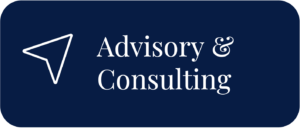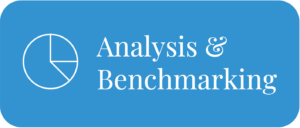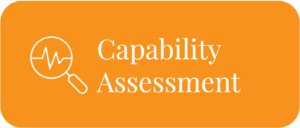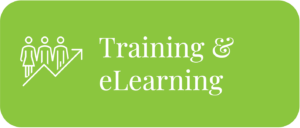Imagine a company that consistently saves millions annually while maintaining top-notch product quality and pioneering innovations in its industry. The secret behind such success often lies in effective supplier relationships. Strong supplier relationships are the backbone of successful procurement, and their impact is profound. According to a Deloitte study, businesses with well-managed supplier relationships can achieve up to 30% cost reduction and a 20% increase in efficiency.
Effective supplier relationships are the backbone of successful procurement.
Supplier relationships are essential for achieving cost savings, ensuring high quality, driving innovation, and maintaining supply chain resilience. Procurement consultants bring valuable expertise to managing these relationships, helping businesses maximise the benefits of strong supplier partnerships. This blog will explore key aspects of navigating supplier relationships, including understanding their importance, establishing clear communication channels, building trust, setting performance metrics, managing risks, negotiating effectively, and fostering continuous improvement and innovation.
They provide significant benefits in several areas:
Cost Savings: Well-managed supplier relationships can improve pricing, volume discounts, and cost-effective procurement processes. Consistent communication and trust with suppliers often result in more favourable terms and reduced costs.
A comprehensive approach to supplier relationships should focus not only on immediate cost savings but also on the total cost of ownership (TCO). This includes direct costs, indirect costs, and potential future costs related to the procurement process.
Case Study: Toyota’s TCO Strategy
Toyota is renowned for its focus on TCO in its supplier relationships. By working closely with suppliers to improve production processes and quality control, Toyota has been able to reduce costs across the supply chain. For instance, the company collaborates with Denso, a major supplier, to implement lean manufacturing techniques. This partnership has led to significant reductions in waste and inefficiencies, ultimately resulting in a 15% cost reduction across their joint operations (Source: Liker, Jeffrey K., The Toyota Way, 2004).
Quality: Reliable suppliers who understand your standards can consistently deliver products that meet your requirements. This reduces defects and returns, ensuring your products maintain a high standard.
Implementing methodologies such as Six Sigma in supplier quality management can drastically improve product quality and consistency. This involves rigorous data analysis to identify and eliminate defects in the production process.
Case Study: Motorola’s Six Sigma Implementation
Motorola’s implementation of Six Sigma in its supplier management resulted in a dramatic improvement in product quality. By collaborating with suppliers to adopt Six Sigma practices, Motorola achieved a 99+% defect-free production rate. This collaboration involved detailed training programs for suppliers and joint quality improvement projects, leading to a 20% reduction in product defects and a significant increase in customer satisfaction (Source: Pande, Peter S., et al., The Six Sigma Way, 2000).
Innovation: Collaborative relationships with suppliers can drive innovation. Suppliers often bring unique expertise and insights that can contribute to developing or improving new products.
Joint Development Agreements (JDAs) allow companies to work collaboratively with suppliers on new product development. This approach leverages the unique expertise of each partner to drive innovation and bring new products to market faster
Case Study: Boeing and Hexcel
Boeing’s partnership with Hexcel, a supplier of advanced composite materials, exemplifies the power of JDAs. By jointly developing lightweight composite materials for aircraft, Boeing was able to significantly reduce the weight of its 787 Dreamliner, leading to a 20% improvement in fuel efficiency. This collaboration also resulted in the creation of new manufacturing processes and materials that have set industry standards (Source: Hexcel Annual Report, 2018).
Supply Chain Resilience: Strong relationships with suppliers enhance supply chain resilience. Trustworthy suppliers are more likely to prioritise your needs during disruptions, ensuring a steady supply of critical materials and components.
Achieving multi-tier supply chain visibility involves using advanced analytics and technology to monitor and manage risks across the entire supply chain, not just direct suppliers.
Case Study: Cisco Systems
Cisco Systems has implemented a multi-tier supply chain visibility strategy to enhance its resilience. By using advanced analytics and IoT devices to monitor the supply chain, Cisco can detect potential disruptions early and take proactive measures. For example, during the 2011 Thailand floods, Cisco’s visibility into its multi-tier supply chain allowed it to quickly identify and mitigate the impact on its hard drive suppliers, preventing significant disruptions and maintaining customer delivery schedules (Source: Cisco Annual Report, 2012).
To delve deeper into the specifics of these benefits, let’s explore how establishing clear communication channels can significantly impact your procurement success.
Establishing Clear Communication Channels
Think of effective communication with suppliers as the heartbeat of successful procurement. It’s not just about talking—it’s about ensuring everyone is on the same page. Start by setting clear communication protocols. Define who should talk to whom and through which channels. This upfront clarity avoids confusion later. Also, deciding on response times and update frequencies is crucial to keeping everyone aligned.
Update frequencies should match the project’s pace and complexity.
Weekly updates are standard for ongoing projects, while daily updates might be necessary for high-stakes or time-sensitive tasks. Monthly updates can suffice for long-term strategic relationships. Establishing these frequencies ensures consistent communication and helps in setting expectations.
Regular updates are the lifeblood of this process.
Whether weekly or monthly, consistent updates inform suppliers about project progress, changes, and expectations. These regular check-ins help maintain alignment and prevent any miscommunication. Transparency is your best friend here. Sharing relevant information openly with suppliers builds trust and fosters collaboration, helping you anticipate and resolve issues before they become problems.
Response times should be tailored to the urgency of the issues at hand. For routine matters, a 24-hour response time is often sufficient. For more critical issues, aim for immediate acknowledgment within an hour and a resolution timeline that fits the severity of the situation.
Using the right tools can make a world of difference.
Platforms like Slack, Microsoft Teams, or Asana are invaluable for real-time communication and project management. They make seamless communication possible, even across distances. For document sharing, cloud-based solutions like Google Drive or Dropbox ensure everyone has access to the most up-to-date documents. And for a comprehensive approach to communication, tracking, and reporting, supply chain management software like SAP Ariba or Oracle SCM is a must.
Transparent information sharing is critical.
They keep both parties on the same page, reduce misunderstandings, and foster a collaborative environment. Clear communication helps you identify potential issues early, allowing for proactive problem-solving and continuous improvement.
Speed:The speed of information sharing within a network significantly influences its ability to innovate and lower communication costs. |
Innovation:Collaborative relationships with suppliers can drive innovation. Suppliers often bring unique expertise and insights that can contribute to developing or improving new products. |
Resilience:Strong relationships with suppliers enhance supply chain resilience. Trustworthy suppliers are more likely to prioritise your needs during disruptions, ensuring a steady supply of critical materials and components. |
The “Relationship” in SRM: Building Trust and Collaboration
Building trust and fostering collaboration with suppliers is vital for long-term success. Think of your supplier relationships as partnerships.
Start with consistent communication.
Keep the lines of communication open and transparent to build trust and ensure alignment. Reliability is another cornerstone; consistently delivering on promises and meeting deadlines reinforces trust and encourages reciprocal commitment. Treat your suppliers with mutual respect, valuing their input and expertise. This respect fosters a collaborative and positive relationship.
Consider implementing joint development projects to engage suppliers in co-development efforts.
This approach of incorporating upstream supply chain partners into product development is known as “Early Supplier Involvement” (ESI): it involves suppliers participating in their customer’s new product development (NPD).
For example, Boeing’s collaboration with Adient resulted in the formation of Adient Aerospace, a joint venture aimed at designing, manufacturing, and selling aircraft seats. This partnership, established in 2018, leveraged Adient’s expertise in automotive seating and Boeing’s extensive knowledge in aerospace to address industry needs for higher capacity, better quality, and reliable on-time performance in aircraft seating. The joint venture aimed to reduce production delays and improve product quality, ensuring that seating products could be delivered efficiently for both new installations and retrofits .
Supplier development programs are another effective strategy. Programs like Toyota’s supplier development initiatives have significantly enhanced quality and efficiency across their supply chain.
Additionally, create an environment where suppliers feel encouraged to contribute innovative ideas.

Apple’s collaboration with its suppliers has led to ground-breaking product advancements.
Joint Innovation: Apple and its suppliers collaborate early in the design process. This allows them to share ideas and technical expertise to develop new components or manufacturing techniques that wouldn’t be possible on their own.
Customisation: Apple is known for its demanding specifications and custom-designed components. Suppliers play a crucial role in meeting these requirements. This close collaboration allows Apple to get exactly what it needs for its products, leading to features that differentiate it from competitors.
Efficiency and Speed: By working closely with a limited number of trusted suppliers, Apple can streamline the production process. This reduces delays and allows them to get new products to market faster.
Here are some examples of how Apple’s supplier collaboration has resulted in ground-breaking products:
- Retina Display: Apple partnered with display manufacturers to develop the high pixel density screens that are a hallmark of iPhones and iPads.
- A-series chips: Apple designs their own custom chips for iPhones and iPads, but they rely on partners like TSMC for advanced manufacturing processes.
- Touch ID and Face ID: These biometric authentication systems required close collaboration with sensor and security component manufacturers.
These examples highlight the importance of strategic supplier partnerships in driving innovation and maintaining a competitive edge.
Trust and relational governance are especially crucial in the early stages of a relationship.
Effective governance mechanisms, such as clear contractual agreements, regular performance reviews, and joint decision-making processes, ensure that both parties are aligned and accountable, fostering a transparent and cooperative relationship (see Part 2 of this article for more).
Establishing a foundation of trust early on leads to more robust and resilient partnerships that can withstand challenges and foster long-term collaboration. Understanding and effectively navigating the phases of forming, norming, storming, and performing is essential in building trust and collaboration.
- Forming: In this initial phase, focus on setting clear expectations and establishing open communication to build trust. Outline roles, responsibilities, and objectives clearly to ensure everyone is on the same page.
- Norming: During this phase, work on aligning goals and fostering mutual respect. This helps to solidify the relationship as both parties understand each other’s strengths and working styles.
- Storming: This phase might bring challenges and conflicts. It’s crucial to maintain transparency and reliability to weather the storm and strengthen trust. Address conflicts openly and work collaboratively to find solutions.
- Performing: Finally, in the performing stage, leverage the established trust to collaborate effectively. This is where you drive innovation and achieve shared goals, resulting in a high-functioning and productive partnership.
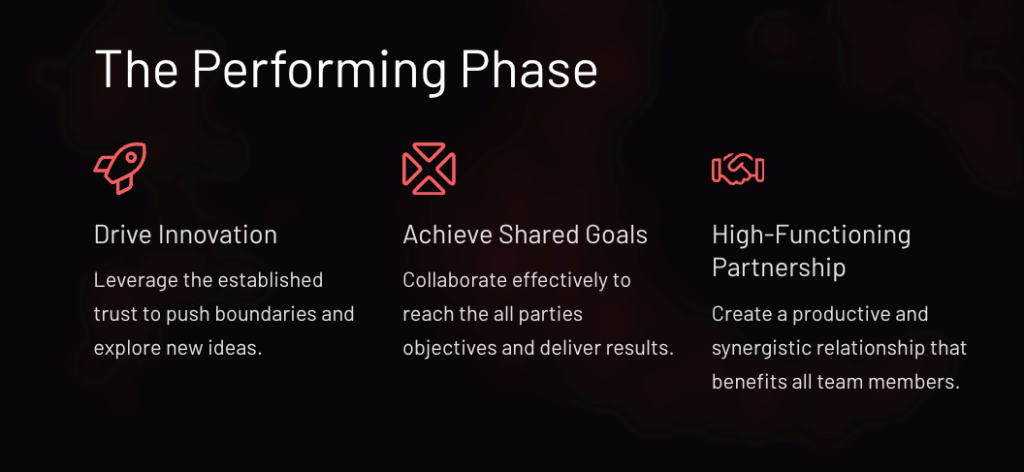
From Forming to Performing – Quickly
To quickly transition from forming to performing in SRM, focus on aligning goals and objectives with your suppliers. Start by defining shared objectives to ensure both parties understand and agree on the desired outcomes. Establish joint performance metrics that reflect these objectives, and review progress regularly to adjust strategies as needed. Additionally, create incentive structures that reward both parties for achieving mutual goals, promoting a win-win scenario.
For example, General Motors (GM) and Tenneco navigated the forming, norming, and storming phases to achieve a high-performing partnership. In the forming phase, they set a solid foundation by defining clear roles, responsibilities, and shared goals, such as quality improvement and cost reduction. They agreed on communication protocols and established key performance indicators (KPIs).
During the norming phase, GM and Tenneco built trust and alignment through regular performance reviews and collaborative problem-solving. They streamlined processes and jointly addressed challenges, leading to significant efficiency gains. For instance, GM’s Supplier Development Program and regular Kaizen events helped enhance Tenneco’s capabilities and eliminate inefficiencies.
In the storming phase, they faced challenges such as supply chain disruptions and quality concerns. By forming crisis management teams and implementing Six Sigma methodologies, they swiftly addressed these issues, maintaining transparency and trust.
Through these phases, GM and Tenneco transitioned to a high-performing partnership. They achieved a 20% reduction in production costs, improved on-time delivery rates by 30%, and developed innovative products, demonstrating the effectiveness of aligning goals, establishing performance metrics, and fostering continuous improvement. This approach highlights the importance of structured relational governance in driving supplier relationship success.
Procurement consulting and Supplier Relationship Management
Having a procurement consultant by your side can be a game-changer in building trust and fostering collaboration by aligning goals and objectives between you and your suppliers.
Here’s how they can help:
- Strategic Guidance:
- Supplier Segmentation: Consultants can help categorise your suppliers based on factors like spend, criticality, and performance. This helps identify strategic suppliers who deserve a more collaborative approach.
- SRM Framework Development: They can assist in creating a structured SRM framework with clear goals, communication protocols, and performance metrics for managing strategic supplier relationships.
- Building Trust and Collaboration:
- Facilitation & Negotiation: Consultants can act as neutral facilitators during meetings between your team and strategic suppliers. This helps ensure open communication and productive discussions.
- Joint Goal Setting: They can guide both parties in defining shared goals and objectives for the collaboration. This fosters a sense of working towards a common purpose.
- Risk Management: Consultants can help identify potential risks in the collaboration and develop mitigation strategies. This builds trust by demonstrating a proactive approach to problem-solving.
- Communication & Relationship Coaching: They can train and coach your team and your strategic suppliers on effective communication practices that build trust and rapport.
- Additional benefits:
- Process Improvement: Consultants can identify inefficiencies in your procurement and supplier management processes and suggest improvements to streamline collaboration.
- Technology Implementation: They can help assess and implement SRM software solutions that facilitate communication, data sharing, and performance tracking with strategic suppliers.
Procurement consultants will bring objectivity to your team, facilitating the needs and desires of all stakeholders and ensuring that shared objectives are clearly defined and mutually beneficial. With their expertise, consultants establish effective performance metrics and develop incentive structures that reward both parties, creating a win-win scenario. They facilitate clear communication, maintain transparency, and provide valuable mediation when challenges arise, ensuring conflicts are resolved promptly and fairly.
As we’ve seen, establishing clear communication channels and building trust and collaboration are foundational to developing strong supplier relationships.
Focusing on these initial strategies can lay the groundwork for a robust SRM framework.
In the next part, we will delve into the more analytical aspects of SRM, including performance metrics, risk management, negotiation tactics, and fostering continuous improvement.





